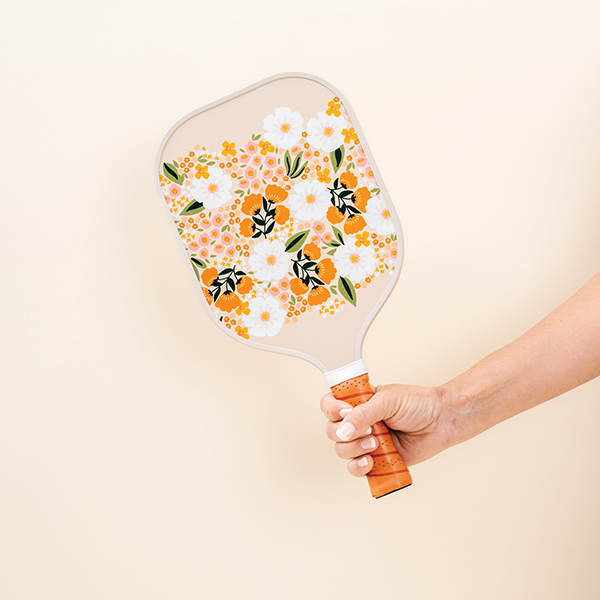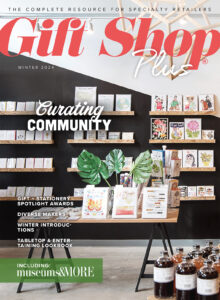The Sweet Smell of Success
Everybody Loves Flowers
There’s a simple reason Americans spent around $7 billion dollars on flowers last year: Everybody loves them.
“Everybody loves to receive flowers and be around them,” says Paul Goodman, a financial consultant and president of Floral Finance Business Services Inc. in Tulsa, OK. Flowers are bought for a wide variety of occasions: Valentine’s Day, Mother’s Day, births, weddings, proms and even more somber ones like funerals. The florist industry is large and varied with stores running the gamut from the traditional “mom and pop” wedding and funeral-focused variety to more trendy and upscale boutique stores that cater to the discriminating buyer looking for something very unique.While many florists sell mainly flowers, many also sell gifts marketed independently or as add-ons to the live arrangements that go out the door.
Inventory challenges
While dealing with and being surrounded by flowers is great, one of the principal challenges to the business is management of inventory. And when you are selling both flowers and other giftware, it also means dealing with two varieties of products: one perishable with a very short shelf life and the other, not.
Ken Eitel is the owner of Eitel’s Flowers and Gifts, a family-owned business in Greencastle, IN. He agrees that the biggest challenge in his business is inventory management. And there are advantages and disadvantages to each category of goods. With flowers, the cash turnover is more immediate, Eitel points out.
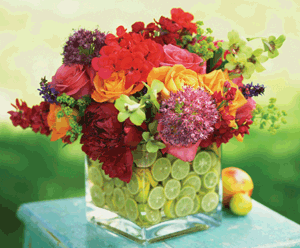 “Gifts are a product that you purchase and they stay on your shelf—fresh cut flowers you hope to turn every few days, so it’s a very different mindset in terms of cash flow when you carry gifts because you don’t get your money immediately like you do with fresh cut flowers,” he says. While the benefit of getting cash in hand right away is significant for florists, managing that fresh (and perishable) inventory can be challenging. “The risk with flowers is that, at the end of three or four days you have to throw a certain percentage of your inventory in the dumpster because it’s no longer saleable,” says Eitel. Giftware, on the other hand, doesn’t have to be turned around as quickly as flowers although there is a chance you’ll have to discount slow-moving items.
“Gifts are a product that you purchase and they stay on your shelf—fresh cut flowers you hope to turn every few days, so it’s a very different mindset in terms of cash flow when you carry gifts because you don’t get your money immediately like you do with fresh cut flowers,” he says. While the benefit of getting cash in hand right away is significant for florists, managing that fresh (and perishable) inventory can be challenging. “The risk with flowers is that, at the end of three or four days you have to throw a certain percentage of your inventory in the dumpster because it’s no longer saleable,” says Eitel. Giftware, on the other hand, doesn’t have to be turned around as quickly as flowers although there is a chance you’ll have to discount slow-moving items.
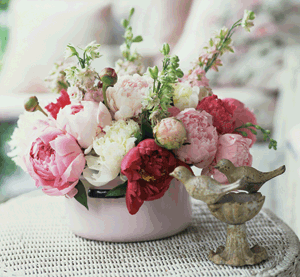 So how do florists overcome this challenge? Some flower shops offer incentives to employees who can incorporate older inventory into floral designs in creative ways, says Tim Farrell, an accomplished floral designer. He has owned and operated Farrell’s Florist in Drexel Hill, PA, since 1983. While good record keeping is always an important must-do in gift retail, it is especially so in this industry, says Eitel. He suggests monitoring trends and staying current through industry publications and events, as one way to help predict demand and therefore manage inventory.
So how do florists overcome this challenge? Some flower shops offer incentives to employees who can incorporate older inventory into floral designs in creative ways, says Tim Farrell, an accomplished floral designer. He has owned and operated Farrell’s Florist in Drexel Hill, PA, since 1983. While good record keeping is always an important must-do in gift retail, it is especially so in this industry, says Eitel. He suggests monitoring trends and staying current through industry publications and events, as one way to help predict demand and therefore manage inventory.
Sandy O’Connell, who is the store manager at Avalon Floral in Eau Claire, WI, says knowing the market and its ebbs and flows is also important in managing inventory for florists. O’Connell orders flowers daily which she says is an advantage because you keep turning them over. She has become adept at knowing just what (and how much of it) to order.
Giftware galore
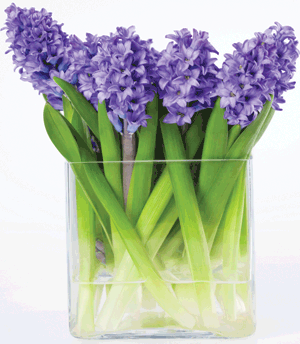 When it comes to stocking giftware in their stores, most florists say the products they choose have a tie-in to the primary seller: flowers. Larry Hammack is the owner of Foxgloves & Ivy Floral Design Studio in Atlanta, a florist committed to being green. Hammack says while the store stocks giftware, the challenge is to make sure they don’t overwhelm the core business: fresh flowers and plants. Other florists share a similar sentiment. Ken Eitel also says the merchandise in his store help keep the focus on flowers. “We are a florist that carries gifts,” Eitel says. “We have a mission statement that says that everything we carry in the gift lines in some way has to relate to fresh cut flowers.”
When it comes to stocking giftware in their stores, most florists say the products they choose have a tie-in to the primary seller: flowers. Larry Hammack is the owner of Foxgloves & Ivy Floral Design Studio in Atlanta, a florist committed to being green. Hammack says while the store stocks giftware, the challenge is to make sure they don’t overwhelm the core business: fresh flowers and plants. Other florists share a similar sentiment. Ken Eitel also says the merchandise in his store help keep the focus on flowers. “We are a florist that carries gifts,” Eitel says. “We have a mission statement that says that everything we carry in the gift lines in some way has to relate to fresh cut flowers.”
What kinds of gift items then make a natural fit in these shops? Candles and bath products are very popular. Items that either hold a flower or a plant (like vases and other containers) work well too. At Farrell’s Florist, gift items are typically candles and fragrances. “These items are a natural add-on to the buying experience sought by customers [visiting] a retail florist,” says Farrell, “much like the candy rack at a grocery check-out generates impulse purchases.”
Baby plush is a sure winner, Farrell adds. O’Connell at Avalon says the store carries baby products that they frequently tuck into arrangements for new babies. Avalon too stocks candles, soaps, lotions and cards but also features items by local artists. The store also promotes a shopping service through which customers can ask for products or services from other establishments in town as an add-on to arrangements.
Merchandising magic
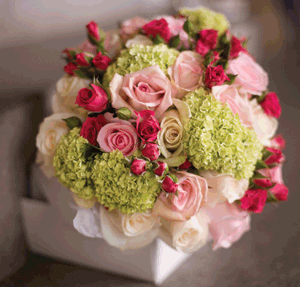 Flowers lend themselves to dramatic displays and provide shop owners with ample opportunity to be creative. Shops like Avalon make the most of these opportunities with dramatic displays and ideas picked up at gift shows and by simply being alert to trends in and outside the florist industry. At Avalon, flowers are not kept in coolers—they are located around the store, serving as focal pieces for the varied gifts and artwork (showcasing local talent) throughout the store. Another smart attention-getting detail: Designers at Avalon work at a station in the middle of the store, allowing them to greet customers and providing another point of interest to draw visitors into the store.
Flowers lend themselves to dramatic displays and provide shop owners with ample opportunity to be creative. Shops like Avalon make the most of these opportunities with dramatic displays and ideas picked up at gift shows and by simply being alert to trends in and outside the florist industry. At Avalon, flowers are not kept in coolers—they are located around the store, serving as focal pieces for the varied gifts and artwork (showcasing local talent) throughout the store. Another smart attention-getting detail: Designers at Avalon work at a station in the middle of the store, allowing them to greet customers and providing another point of interest to draw visitors into the store.
Hammack from Foxgloves & Ivy says they try to keep a candle burning during operating hours. In addition, the body and skin care line the store sells is set out in the restroom and samplers are spread throughout the store. “Our displays tend to make it easier for the customer to visualize how they can [be used] at home,” he says. And, he adds: “Our staff is trained to bring these items to the customers’ attention.”
Sales and marketing
Jean Biri, founder of Groupe Biri, a Montreal-based strategy-consulting firm for entrepreneurs points out that a florist shop is essentially a service business. And as with other service businesses, the strongest marketing tool is reputation. “A florist shop that earns a reputation for the best service and products will become the most talked about and ultimately become the most recognized business in its category,” he says.
 O’Connell agrees. “Word of mouth is very big for us,” she says. “People spread the word.” The special look and feel of Avalon and the floral arrangements themselves definitely help. Avalon manages to stay on trend and often, even make the trends. “We did orange seven years ago and everybody freaked out—now orange is in,” O’Connell says. “You have to stay ahead of it and really be the next level up.”
O’Connell agrees. “Word of mouth is very big for us,” she says. “People spread the word.” The special look and feel of Avalon and the floral arrangements themselves definitely help. Avalon manages to stay on trend and often, even make the trends. “We did orange seven years ago and everybody freaked out—now orange is in,” O’Connell says. “You have to stay ahead of it and really be the next level up.”
Other marketing techniques are ones recommended across retail: use of phone scripts, bag stuffers and direct marketing both through regular mail and email. Hammack includes a Rolodex card with his store’s information in each order so clients can save the information and call in with repeat orders as and when needed.
The online equation
The Internet has become an effective marketing tool for florists just as it has for other branches of retail. Hammack says the store’s “kick-butt” website has been its main marketing tool. Word of mouth and being accessible online, he says, provide a steady flow of business.
Having a strong website also serves to counter the competition from larger, online florist businesses, Hammack says. He also notes that the “giant order gatherers” that don’t operate brick and mortar stores are often not able to provide the quality, consistency and accuracy that stores like his can provide.
O’Connell says that the Internet has been more of a benefit than a threat, not only in terms of generating orders and making it easy for customers to place those orders, but also as an educational tool. The store’s website, she says, helps the store management educate customers better. “They know more about flowers and how to take care of them,” she says. “That’s a very good plus all the way around for me.”
Other operational issues
Staffing needs are low for florists with the average staff size at 3-4 employees, says Jennifer Sparks, vice president of marketing with the Society of American Florists. Drivers, floral designers and sales staff are the typical categories of employees needed.
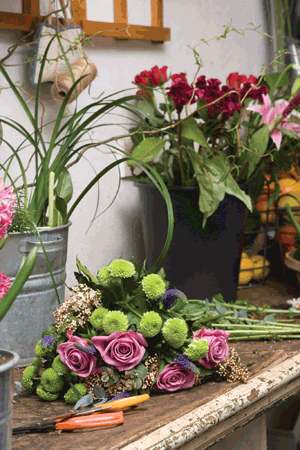 The ability to provide exceptional service is an important consideration when selecting staff, says Hammack. “We hire staff based upon personality, willingness to work and multi-task and—more importantly—ability to learn quickly.”
The ability to provide exceptional service is an important consideration when selecting staff, says Hammack. “We hire staff based upon personality, willingness to work and multi-task and—more importantly—ability to learn quickly.”
“We are in the service industry and every day is a new day—full of surprises,” he adds.
The personal touch is very important in the florist business, agrees O’Connell. “People these days are always in a hurry, yet they still want to have personal care and personal help—and we do that. We try to get their names, to talk to them and to ask them about their families. We really focus on customer service.”
The peak season for florists? It depends on whom you ask! Peak seasons run the gamut, according to Farrell—”October through December for the Christmas holiday, Valentine’s Day and all of the spring holidays, weddings, proms and graduations that keep florists on their toes from March through June.”
Hammack’s business is not highly affected by seasonal trade, he says.
“We are not your typical florist—we provide a premium, high-end product for discriminating clientele. In addition we have a large corporate client base for weekly installations and we also specialize in weddings and receptions, so we stay pretty darned busy,” he says. “If we have a slow time, it would be June—just as school ends and vacations start,” he says.
Goodman points out that a fair portion of the retail florist business is driven by discretionary spending—something that is affected when the economy goes into a slowdown.
Still by keeping on track with the trends and providing excellent service, the business continues to be an exciting one for many. It helps that florists are also in the “occasion business,” says Goodman. “Retail florists are in the occasion business and probably the most significant one of those is sympathy—when people die they’re not going to stop sending sympathy flowers. When people have an anniversary, a birthday, a baby or somebody’s in the hospital—all of these occasions which are single one-time occasions of the consumer are the bread and butter of the retail florist,” Goodman says.
Statistics
| What did florists sell (non-floral giftware sales)? | 2004 | 2005 | 2006 | 2007 |
| Home decorations and accent pieces | 74 | 76 | 78 | 74 |
| Seasonal floral offerings | 66 | 90 | 88 | 90 |
| Candles | 73 | 76 | 73 | 70 |
| Candy | 56 | 65 | 65 | 69 |
| Baskets (fruit, gourmet, etc.) | 87 | 85 | 86 | |
| Ornaments | 70 | 70 | 67 | 63 |
| Table top decorations/Novelty ceramics | 59 | 64 | 61 | 55 |
| Seasonal plush items | 53 | 55 | 57 | 52 |
| Collectibles | 33 | 35 | 30 |
Source: Jennifer Sparks, Society of American Florists
Do you share any marketing strategies with florists? These were the marketing techniques used this year for one of florists’ peak holidays: Mother’s Day.
| Mother’s Day 2008 Marketing Techniques | |
| Indoor signage, posters or displays | 69 |
| Window displays | 62 |
| Statement stuffers or mailers | 49 |
| Newspaper/Magazine Advertising | 44 |
| Website promotions | 44 |
| Outdoor signage | 43 |
| Email promotions or campaigns | 35 |
| Coupons | 29 |
| Direct mail | 27 |
| Radio | 18 |
| Reminder Service | 18 |
| Online ad | 15 |
| TV | 7 |
| PR/Media Interviews | 6 |
| Other | 4 |
| Telephone Campaign/Telemarketing | 3 |
Source: Jennifer Sparks, Society of American Florists



















